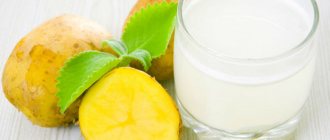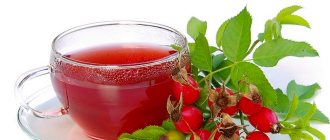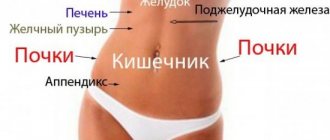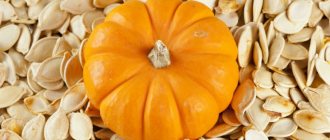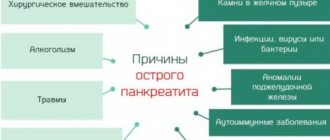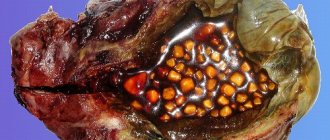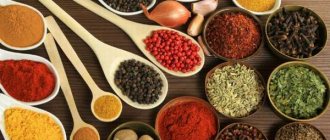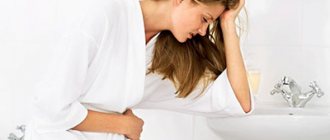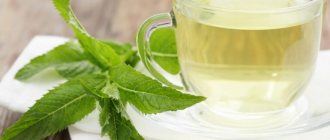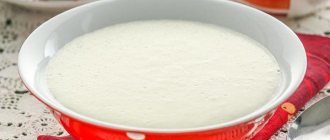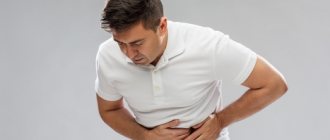Good afternoon, dear friends and readers of Alexey Shevchenko’s blog “Healthy Lifestyle”. Today I have sad news. One of my friends kept complaining about strange pains in his stomach, and when he finally went to the doctor, it turned out that he had been suffering from both cholecystitis and pancreatitis for a long time. Therefore, I want to devote another article to the topic: symptoms of cholecystitis and pancreatitis
Clinical picture of cholecystitis and pancreatitis
The symptoms of both diseases are similar to each other, and sometimes it is not possible to find out which organ became inflamed first. Even complications that arise against the background of cholecystitis and pancreatitis have similar clinical signs.
The main common symptom is severe pain. The pain is felt in the right hypochondrium (in the epigastric region), and it can radiate under the shoulder blade and into the back. Classic symptoms of cholecystopancreatitis are:
- nausea, repeated vomiting (with bile);
- increased temperature (often up to 38ºС) and increased heart rate, sometimes tachycardia is observed;
- jaundice and scleral icterus are possible;
- diarrhea;
- bitter taste;
- belching after eating food;
- heaviness in the epigastrium some time after eating.
When palpated and tapped with the edge of the palm, pain is noted on the right side of the body at the location of the pancreas.
Diagnostics
At the diagnostic stage, the doctor will prescribe blood tests (general and liver tests) to determine the degree and nature of inflammation, as well as an ultrasound of the abdominal organs to determine the possible causes of impaired bile outflow.
In difficult cases, when it is impossible to exclude the causes of blockage of the bile ducts, which are not visible on ultrasound, an X-ray method is used - cholecystocholangiography. With this method, the bile ducts are stained with a radiopaque substance, which makes it possible to visualize various mechanical obstructions, such as stones, adhesions or a tumor process.
Basics of treatment of cholecystopancreatitis
Treatment of both diseases with medications is used when there is no urgent need for surgical intervention. The main essence of drug treatment for cholecystitis and pancreatitis is persistence in the fight against the disease and the duration of drug use.
Recently, as a result of the analysis of statistical data, the theory of the infectious cause of cholecystitis has become increasingly widespread. Antibiotics are used to combat pathogens. Antibacterial therapy is carried out by determining the sensitivity of bacteria to a specific drug. However, often during urgent hospitalization due to lack of time, broad-spectrum antibiotics are used.
The most effective against pathogenic microflora are cephalosporins, which come in four generations. The most commonly used 3rd generation cephalosporins are: Cefixime, Ceftibuten, and for parenteral administration - Ceftriaxone, Cefotaxime.
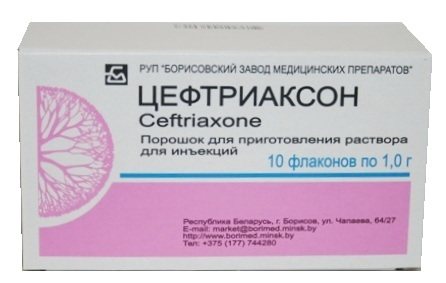
Penicillins are also indicated; they have the same antimicrobial effectiveness as cephalosporins. Among these antibiotics are Amoxicillin and Ampiox. Sometimes intramuscular administration of Gentamicin is indicated, which is active against gram-negative bacteria and even some staphylococci resistant to penicillin.
Among the antibiotics that accumulate in bile in high concentrations, macrolides (Clarithromycin, Azithromycin) are isolated.
Vitamins are used simultaneously with antibacterial therapy.
Antispasmodics will help get rid of pain. Basic painkillers: No-shpa, Spazmalgon, Ketanov, Atropine, Tramal.
Cholecystopancreatitis must be treated with the use of choleretic agents. They help with any symptoms due to their effect on the biliary function and generally alleviate the patient’s condition.
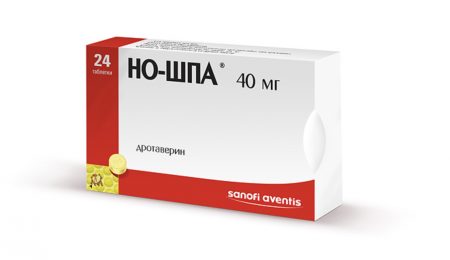
Choleretic agents in the treatment of cholecystitis and pancreatitis
Due to cholecystitis, bile is thrown into the pancreas, thereby causing inflammation and swelling. Therefore, special attention should be paid to medications that stimulate the production of bile or eliminate its stagnation.
Choleretic drugs are indicated to treat cholecystitis and pancreatitis at any stage of the disease: both acute and chronic. They are represented by several types and differ in their effect on liver function.
| Name | Indications for use | Essential Medicines |
| Choleretics | Promotes the production of bile by the liver. They are divided into true choleretics (contain bile acids), plant and synthetic origin. Plant choleretics are produced from the herbs oregano, tansy, immortelle, mint, birch buds, rose hips, barberry, and coriander fruits. Medicines of a synthetic nature are derivatives of organic acids, which, in addition to choleretic, have an anti-inflammatory and antibacterial effect. | Allohol, Karsil, Cholenzym, Odeston, Lyobil, Meksaza, Decholin, Holagon, Nicodin, Cyclalon, Oxafenamid, Cholestil - most of these herbal medicines with the least side effects. |
| Cholekinetics | They influence the concentration of bile and remove it by affecting the tone of the gallbladder and pathways. First subgroup: drugs that affect the tone of the bladder and reduce the tone of the biliary tract. The second subgroup of drugs has a relaxing effect on the gallbladder. | Eufillin, Olymethine, Sorbitol, Xylitol, Metacin, Cholecystokinin, belladonna extract, barberry, etc. |
Sometimes, in the absence of stones in the gall bladder, blind tubage with mineral waters is indicated, which also has a good choleretic effect.

Treatment during pregnancy
Pregnant women are prescribed choleretic drugs for pancreatitis with extreme caution, because some of them can affect the fetus.
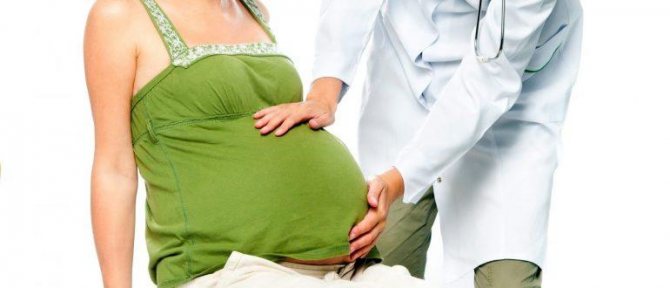
Often, inflammation of the pancreas develops in late pregnancy, when the growing fetus puts pressure on the internal organs, complicating the process of bile secretion.
The safest methods of treating pregnant women are the use of alkaline mineral waters, rosehip decoction and herbal preparations. If these drugs are ineffective, it is advisable to use choleretic drugs of plant origin, which have no effect on the developing fetus. Such medications include Holosas, Galstena, Allohol. Before starting treatment, it is necessary to consult with a gynecologist managing the pregnancy.
Vitamin therapy
Due to impaired metabolism and food digestion processes in cholecystitis and pancreatitis, it is recommended to take vitamin complexes. Despite food restrictions, vitamins are not prohibited, but on the contrary, they are recommended:
- vitamin B3 affects the production of trypsin, amylase and lipase, prevents diarrhea and stimulates blood circulation in the pancreas;
- vitamin B1 regulates the processes of fat, carbohydrate and protein metabolism;
- Vitamin C together with tocopherol prevents the formation of calculous deposits in the gallbladder. In addition, it increases general immunity, thereby influencing the relief of symptoms;
- cyanocobalamin affects the secretion of bile by the liver;
- vitamin B6 promotes enzymatic activity, the drug is available in the form of subcutaneous or intramuscular injections;
- retinol has a general strengthening, antioxidant effect and reduces the manifestations of dyspepsia.

Basics of pancreatic therapy
Treatment of the pancreas depends on the condition of the organ itself (exacerbation or remission) and the general well-being of the patient.
In case of exacerbation of the disease and pain syndromes, the patient is indicated to be treated with hunger and rest. The patient is given a drip with glucose and saline to prevent dehydration and reduce intoxication of the body.
Drugs indicated for cholecystitis and pancreatitis are divided into two types depending on the specific dysfunction of the pancreas:
- with hypersecretion of the organ, when increased production of pancreatic fluid occurs;
- with insufficient secretion of juice.
To reduce pancreatic hypersecretion, Omeprazole, Pantoprazole, Lansoprazole are used. To improve digestion, Mezim, Cotazim, Pancreatin, Pancitrate, Digestal, Creon are indicated. It is better to take the microgranular substance in tablets or capsules.
Symptoms of acute pancreatitis.
In most cases, at the beginning of the disease, vague pain appears in the epigastric region or near the navel, in the right or left hypochondrium, and there may be diarrhea. Subsequently, severe pain occurs in the upper abdomen, which is girdling in nature. When pain appears in the left hypochondrium, one can think of damage to the tail of the pancreas, with pain in the midline of the abdomen - about damage to the body of this organ, with pain to the right of the midline - about damage to the head of the pancreas.
With girdle pain, inflammation of the entire pancreas occurs. An attack of pain begins after drinking alcohol or rich and fatty foods. The patient is restless and constantly searches for a position in which the pain would subside. If the pain is severe, shock may develop. Due to reflex irritation of the diaphragm, obsessive, prolonged hiccups appear.
One of the main signs of pancreatitis is nausea and vomiting - painful, frequent, and not bringing relief. The patient's face becomes sharper. Severe pallor and sometimes cyanosis of the skin and mucous membranes are observed. Very often, jaundice appears with pancreatitis. At the beginning of the disease, the pulse is within normal limits, and then it increases, and blood pressure decreases.
Alternative Herbal Treatment
For joint cholecystitis and pancreatitis, as well as some other gastrointestinal diseases, in order to minimize side effects, you can take decoctions and infusions of herbs: hawthorn, immortelle flowers, chamomile, string, mint leaves, elecampane, calendula flowers and others.
You can also prepare choleretic tea from medicinal plants: for half a liter of boiled water, four parts of cumin flowers, the same amount of yarrow, two parts of coriander and mint leaves, one part of chamomile and marigold. You need to brew a fresh portion every day.
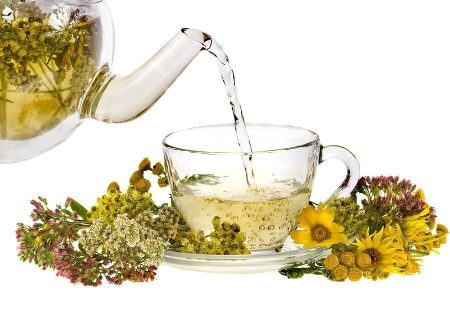
It is impossible to cure combined chronic cholecystitis and pancreatitis forever, but it is quite possible to bring it to a state of long-term remission. To do this, you need to strictly adhere to dietary nutrition and control outbreaks of exacerbations.
- Antispasmodics and painkillers
- Etiological factors
- Short description
Holosas
This drug belongs to the group of hepatoprotectors and has choleretic, diuretic, immunomodulatory and anti-inflammatory effects. Strengthens intestinal motility. Increases the tone of the whole body.
What to do if you have diabetes?!
- This proven medicine helps to overcome diabetes completely, it is sold in every pharmacy, it’s called.
Read more >>
The product is produced in the form of syrup and consists of exclusively natural ingredients - rosehip extract and sugar. Thanks to vitamin C, which is contained in rose hips, it has a general strengthening effect and improves immunity.
The active substances of the drug restore liver cells and contribute to their protection and normal functioning.
- Hepatitis.
- Cholecystitis.
- Cholangitis.
- Biliary dyskinesia.
- Alcohol poisoning.
- Drug intoxication.
- Reduced immunity.
- Metabolic disorders.
The medicine cannot be used in case of individual intolerance to the components, diabetes mellitus (since the medication contains sugar), calculous cholecystitis, obstruction of the biliary tract, and children under 3 years of age.
During pregnancy and lactation, the drug can be used only according to strict indications and only after consulting a doctor.
- Children from 3 to 6 years old: ¼ teaspoon 2-3 times a day.
- Children from 6 to 14 years old: ½ teaspoon 2-3 times a day.
- Children over 14 years of age and adults: 1 teaspoon 2-3 times a day.
The syrup should be consumed before meals. The exact dosage and course of treatment are prescribed by the attending physician. The duration of treatment depends on the type and degree of pathology, the age of the patient and the individual characteristics of the patient’s body.
Provoking factors for cholecystitis can be
Bend of the gallbladder, presence of constriction in its cavity and other congenital anomalies
Dyskinesia of the gallbladder and biliary tract
Abdominal injuries and surgeries
Chronic inflammatory processes of the gastrointestinal tract, including microflora disorders (dysbacteriosis)
Pregnancy, hormonal disorders
Poor food hygiene (long breaks between meals, consumption of smoked, fatty, fried foods)
Obesity, metabolic disorders
Severe stress
Allohol
This is a choleretic drug that also improves the secretory function of the liver and gastrointestinal tract, stimulates the biliary tract, improves digestion and eliminates the processes of putrefaction and fermentation in the intestines.
The product is available in tablet form. It has a complex composition:
- Dried animal bile.
- Garlic.
- Nettle.
- Activated carbon.
- Auxiliary components.
The active components of the product ensure the complex effect of the drug.
- Chronic hepatitis.
- Cholangitis.
- Cholecystitis.
- Postcholecystectomy syndrome.
- Biliary dyskinesia.
- Constipation.
The drug is not prescribed to patients who have the following contraindications:
- Individual intolerance to components.
- Calculous cholecystitis.
- Acute hepatitis.
- Pancreatitis in the acute stage.
- Obstruction of the biliary tract.
- Liver dystrophy of acute and subacute forms.
- Ulcer of the stomach and duodenum.
- Age less than 3 years.
During pregnancy and lactation, the product can be used only under strict indications and only after consulting a treating specialist.
Directions for use: 1-2 tablets three times a day. Should be consumed after meals. The exact dosage and duration of treatment is prescribed by the treating specialist. The course of treatment depends on the type and degree of the disease, the age of the patient and the individual characteristics of the patient’s body.
Similarities and differences
Both medications effectively remove bile from the body, stimulate intestinal function, and eliminate constipation. Both remedies can be used by pregnant women, but only under the strict supervision of a doctor. But they have their differences:
The development of cholecystitis often leads to damage to the pancreas. If a person has both cholecystitis and pancreatitis, then this disease is diagnosed as cholecystopancreatitis, which is characterized by severe pain, especially sensitive to palpation.
Factors causing pancreatitis with cholecystitis of 3 types:
- Low mobility, excess weight, poor nutrition.
- Food and alcohol poisoning.
- Consequences of taking certain medications (antibiotics, sulfonamides, etc.).
- unhealthy diet with a predominance of fatty, floury, spicy, fried, salty foods, canned food or food with insufficient calorie content;
- alcohol abuse, smoking;
- genetic predisposition;
- frequent infection of the nose, pharynx, larynx;
- physical inactivity, excess weight;
- frequent poisoning;
- problems with the metabolic process in the body, its slagging;
- diseases of the stomach, operations on it and the gall bladder;
- developing diabetes mellitus;
- intoxication of the body.
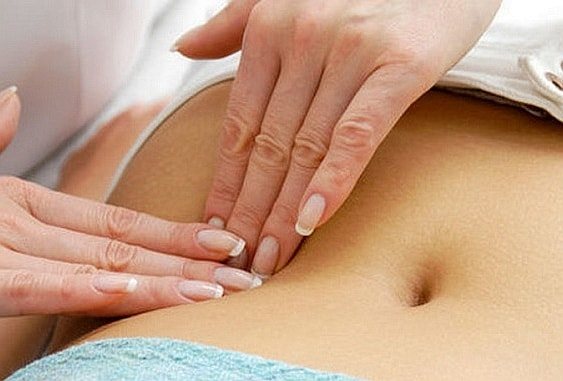
This is a list of common symptoms that appear in the presence of cholecystitis with pancreatitis. Of great concern is the combination of several of these factors with the possibility of developing complications, including oncology. In children, the disease develops with congenital enzymopathy, malformations of the digestive organs.
The symptoms of cholecystitis and pancreatitis are very similar, so it is difficult to determine in which organ the inflammation occurred first. The main symptom for both diseases is severe pain, concentrated on the right. Painful sensations cover the chest area, hypochondrium, radiating to the area of the right shoulder blade.
Other signs of cholecystitis and pancreatitis:
- vomiting, constant feeling of nausea;
- lack of appetite;
- heartburn, belching;
- increased pain when lying down.
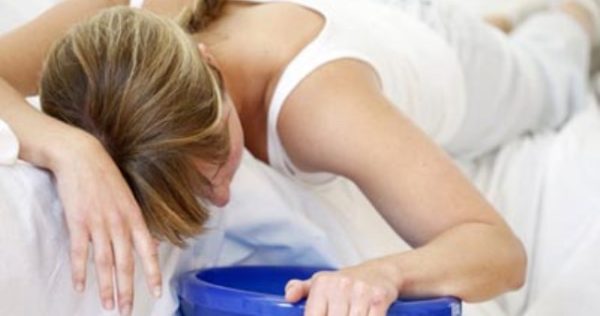
The causes and symptoms of diseases are often the same. The mechanism of development of both is triggered by excessive consumption of fatty, fried foods, but there are nuances. The cause of an inflamed bladder is often infection with parasites and harmful microorganisms, and pain in the solar plexus area is considered a clear sign of pancreatitis.
The following manifestations indicate cholecystitis:
- nausea, vomiting mixed with bile;
- diarrhea;
- feeling of bitterness in the mouth;
- sometimes yellowness of the skin, sclera;
- elevated temperature, rapid pulse.
Inflammatory processes in both diseases are acute or chronic.
Treatment with drugs
The functioning of the pancreas is closely related to the gallbladder. If the functions of one of the organs are impaired, the normal functioning of the other is impossible. Therefore, treatment of cholecystitis of various types and pancreatitis of any stage is carried out simultaneously, and these diseases are usually treated with medications and for a very long time.
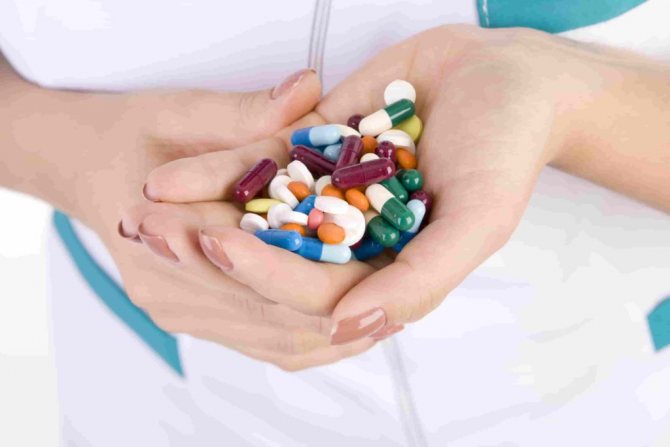
Drug treatment of pancreatitis, as well as cholecystitis, is the main means of getting rid of them. It consists of taking medications of different spectrum of action, which are determined by the doctor. Usually they prescribe drugs that will be equally useful for the restoration of both organs.
What to do if you have diabetes?!
- Are you suffering from metabolic disorders and high blood sugar?
- In addition, diabetes leads to diseases such as overweight, obesity, pancreatic tumors, vascular damage, etc. The recommended medications are not effective in your case and do not combat the cause in any way...
We recommend reading an exclusive article on how to forget about diabetes forever. Read more >>
Chronic cholecystitis with pancreatitis can be treated with choleretic drugs at any stage of the disease. Since bile from the bladder penetrates the pancreas, provoking its inflammation, reflux must be prevented. The problem is solved by using agents that cause the production of bile and prevent it from stagnating.
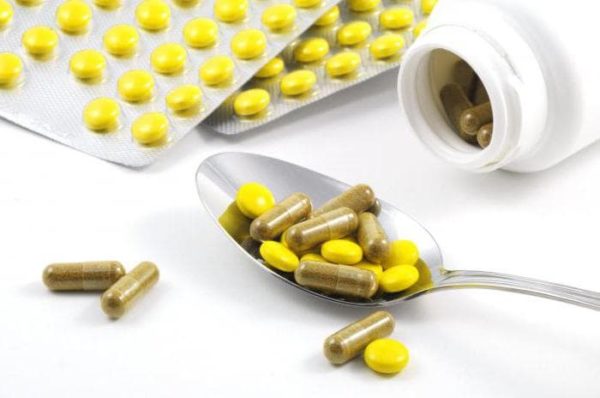
These are drugs that help release stagnant bile from the bladder. For example, magnesium sulfide.

Additional treatments
If treatment with medications goes well, then additional methods of restoring the body are used to enhance the healing effect.
During remission, various physiotherapy procedures can be used. Electrophoresis is effective (for pancreatitis the device is placed on the stomach, for cholecystitis - on the liver). Bile begins to be better produced after 10 sessions, blood circulation in organs improves, and pain is relieved. If stones in the gall bladder have not yet been detected, then the risks of their formation are reduced by physical procedures.
To eliminate bile stagnation, it is recommended to use blind tubage using the Demyanov method. In the morning on an empty stomach you need to drink a glass of still mineral water with the addition of soda. Then lie down and put the heating pad on your right side.
During the acute period of pancreatitis, doctors advise fasting and drinking a lot of water. Move a little to reduce blood flow (sick organs are more likely to return to normal). With cholecystitis, complete fasting is unacceptable; eating lean food. Fasting days with water and fruit are useful.
Water and proper nutrition
It is important not to forget about the benefits of clean water, especially necessary for the digestive organs during chronic diseases. You need to drink a lot (2-2.5 liters) every day.
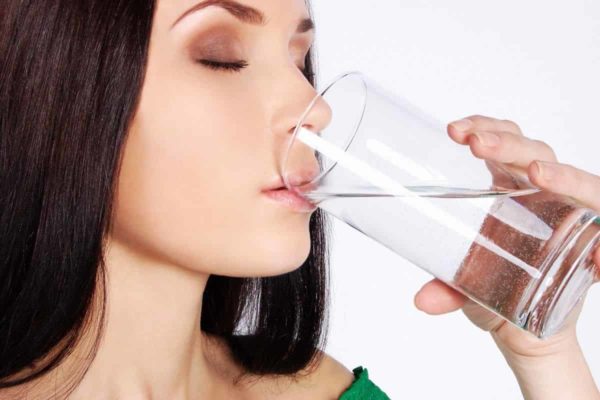
It will increase the flow of bile and improve the functioning of diseased organs. Cannot be replaced with other drinks. Only water helps remove stones from the body, preventing them from forming large solid formations.
Nutrition for chronic diseases of the pancreas and problems with the gallbladder is rational, aimed at alleviating the patient’s condition.
It is important to use compatible products. You should not combine meat with potatoes, animal fats with vegetable fats. It is recommended to eat vegetables with any food, preferably those that grow in your area. If you have pancreatitis, add more protein to your diet. There is a lot of it in fish, eggs, meat, low-fat cottage cheese. You should not eat easily digestible carbohydrates that increase the thickness of bile.
Patient nutrition rules:
- Fractional meals (up to 6 times), small portions.
- The food is warm, meat and fish are steamed.
- Consumption of salt, smoked, fatty, fried, and spicy foods is limited.
- Canned food, dishes with beans, soy, rice, wheat, chocolate, alcohol and foods high in fiber are prohibited.
- Animal fats are replaced with vegetable fats.
Due to disruption of the metabolic process and deterioration of food digestion, taking vitamins and microelements is indicated. Vitamins B1, B2, B3, B6, B12, A, C are useful. Retinol and calcium are important for patients. Everything can be taken from pharmaceutical preparations or products.
Treatment of pancreatitis and cholecystitis involves the use of various folk remedies. The most famous of them is herbal medicine. This treatment for pancreatitis and cholecystitis involves the use of medicinal plants in the form of decoctions and tinctures. More often, herbal preparations with different components are taken.
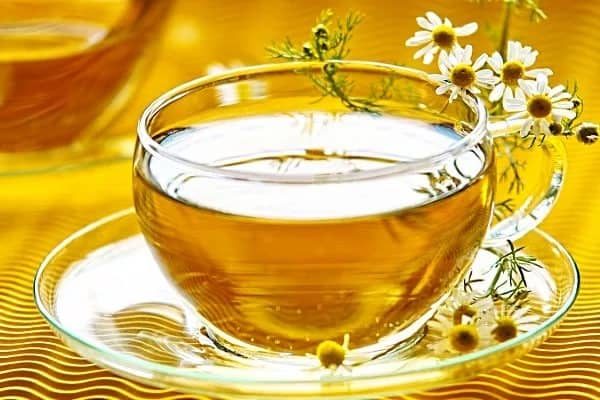
Herbal medicine is used in courses of 1-1.5 months with a break of 2 weeks. It is contraindicated for pregnant women. Anti-inflammatory preparations are used, for example, with chamomile, dandelion, calendula, clover. Mint, string, roots of rhubarb and calamus, black elderberry (flowers, fruits), etc. are considered choleretic.
The best way to treat pancreatitis along with cholecystitis is up to everyone to choose for themselves. Many people find that a tincture of propolis shavings in vodka, prepared in equal proportions, helps. Drink it half an hour before meals 2 times a day (1 tsp per half glass of water). Propolis is also effective with milk (grind 3-5 g, add to a glass of warm milk). Drink before bed.
Cholecystitis and pancreatitis are diseases that are caused by inflammation of the gallbladder and pancreas, respectively. They are often diagnosed together, but rarely appear separately. Cholecystitis and pancreatitis have similar symptoms and therefore it is recommended to treat them simultaneously. In addition, they are caused by the same reasons and give the same complications.
In a healthy person, enzymes that help digest food arrive from these internal organs into the digestive tract. The gallbladder is filled with high-concentration fluid (bile), which is produced by the liver, and the pancreas itself participates in the formation of pancreatic juice. The patient has these functions impaired.
Introduction
The founder of medicine, the ancient Greek scientist Hippocrates (lived around 460–377 BC) said: “Let your food be your medicine, and let your medicine be food.” The famous eastern scientist and physician Avicenna (Abu Ali Ibn Sina, years of life 980–1037 BC) in his main work “The Canon of Medical Science” emphasized the importance of “medicinal food”. Academician A. A. Pokrovsky, a leading Russian nutritionist, author of the concept of a balanced diet, believes that the effect of food components on the body is comparable to the effect of pharmacological drugs.
Food is one of the environmental factors that have a powerful effect on the body, and this effect can be both positive and negative. Everything that a person eats is first broken down, then absorbed in the form of microscopic particles and carried through the bloodstream throughout the body. The growth processes, the very development of the body and the preservation of health are directly determined by a rational, balanced diet. When the disease occurs, the metabolism in the body changes, so changing the nature of nutrition can improve metabolism and actively influence the course of the disease.
Briefly, the concept of a balanced diet can be formulated as follows: for the normal functioning of the body, it is not enough to provide it only with the necessary amount of energy and proteins (building materials), one must also introduce essential nutritional factors into the diet and maintain the necessary balance of all substances supplied with food. Essential nutritional factors include essential amino acids (components of proteins), vitamins that the body itself cannot create, some fatty acids, minerals and trace elements. There are quite strict relationships between the essential nutritional factors, the violation of which first entails changes in the physiological state of the body, metabolic disorders, and then diseases. Based on the concept of a balanced diet, the necessary proportions of individual substances in food rations have been developed.
We present the main nutritional deficiencies that are characteristic of modern man and can lead to disease:
– excess high-calorie nutrition that does not correspond to lifestyle (most often in combination with low physical activity);
– eating too fatty foods;
– increased content of table salt in the diet (especially with canned food, marinades, smoked meats and other preparations);
– excessive consumption of sugar, sweets and sugary drinks;
– low dietary fiber content;
– insufficient consumption of vegetables, fruits, fruits and berries;
– deficiency of fermented milk products;
– monotonous food;
– violation of the diet (irregularity), as well as fast, hasty eating;
– nutrition that is not appropriate for age (elderly people, with low energy needs, consume excessive amounts of high-calorie foods).
According to the Institute of Nutrition of the Russian Academy of Medical Sciences (Russian Academy of Medical Sciences), the daily diet of many, if not most Russians, is incorrectly balanced in its main components; energy-intensive foods predominate in it: bread, potatoes, flour (including sweet confectionery) products, animal fats. At the same time, the diet lacks foods containing essential amino acids, polyunsaturated fatty acids, dietary fiber, vitamins and minerals. It is noted that the daily diet has become richer in taste, but less balanced in composition; it is excessively high in calories, but does not provide the body with the required amount of necessary components.
The importance of therapeutic nutrition in the treatment of various diseases not only does not decrease over time, but, on the contrary, increases. This phenomenon is explained by several circumstances: food and its components can have a direct damaging effect on the digestive organs; long-term use of medications for chronic diseases with frequent exacerbations often leads to deterioration in the functioning of the stomach, pancreas, and gallbladder, causing various digestive disorders; Long-term drug therapy naturally reduces the therapeutic effect of medications, and in some cases leads to the emergence of new pathological conditions, most often to disorders of the gastrointestinal tract and allergic diseases. The role of therapeutic nutrition is also significantly increased by environmental problems and frequent stress (a characteristic feature of modern times).
Modern dietetics makes it possible to ensure that therapeutic diets correspond to the disorders in the body that develop during a particular disease. This approach helps eliminate metabolic disorders caused by the disease, normalizes the course of chemical reactions and restores the altered functions of the organ caused by the disease. Therapeutic nutrition can influence the biochemical processes of the body in a similar way to a medicine.
Based on knowledge about the body’s normal need for energy and the necessary components of food for a healthy person, adjustments are made to the patient’s diet in accordance with the diagnosis of the disease, the characteristics of metabolic disorders, the course of the disease, and its stage. Adjustments are made by changing the quantity and proportions of food components required for a given disease. The simplest example is that limiting table salt in the diet of patients with hypertension leads to a decrease in blood pressure. The importance of dietary nutrition is especially great in the treatment and prevention of diseases of the digestive system. And for some diseases (for example, in patients with hereditary intolerance to fructose and galactose), diet therapy is the only reasonable method of treatment.
Causes of diseases
The development of cholecystitis often leads to damage to the pancreas. If a person has both cholecystitis and pancreatitis, then this disease is diagnosed as cholecystopancreatitis, which is characterized by severe pain, especially sensitive to palpation.
Factors causing pancreatitis with cholecystitis of 3 types:
- Low mobility, excess weight, poor nutrition.
- Food and alcohol poisoning.
- Consequences of taking certain medications (antibiotics, sulfonamides, etc.).
- unhealthy diet with a predominance of fatty, floury, spicy, fried, salty foods, canned food or food with insufficient calorie content;
- alcohol abuse, smoking;
- genetic predisposition;
- frequent infection of the nose, pharynx, larynx;
- physical inactivity, excess weight;
- frequent poisoning;
- problems with the metabolic process in the body, its slagging;
- diseases of the stomach, operations on it and the gall bladder;
- developing diabetes mellitus;
- intoxication of the body.
This is a list of common symptoms that appear in the presence of cholecystitis with pancreatitis. Of great concern is the combination of several of these factors with the possibility of developing complications, including oncology. In children, the disease develops with congenital enzymopathy, malformations of the digestive organs.
The symptoms of cholecystitis and pancreatitis are very similar, so it is difficult to determine in which organ the inflammation occurred first. The main symptom for both diseases is severe pain, concentrated on the right. Painful sensations cover the chest area, hypochondrium, radiating to the area of the right shoulder blade.
Other signs of cholecystitis and pancreatitis:
- vomiting, constant feeling of nausea;
- lack of appetite;
- heartburn, belching;
- increased pain when lying down.
The causes and symptoms of diseases are often the same. The mechanism of development of both is triggered by excessive consumption of fatty, fried foods, but there are nuances. The cause of an inflamed bladder is often infection with parasites and harmful microorganisms, and pain in the solar plexus area is considered a clear sign of pancreatitis.
The following manifestations indicate cholecystitis:
- nausea, vomiting mixed with bile;
- diarrhea;
- feeling of bitterness in the mouth;
- sometimes yellowness of the skin, sclera;
- elevated temperature, rapid pulse.
Inflammatory processes in both diseases are acute or chronic.
Treatment with drugs
The functioning of the pancreas is closely related to the gallbladder. If the functions of one of the organs are impaired, the normal functioning of the other is impossible. Therefore, treatment of cholecystitis of various types and pancreatitis of any stage is carried out simultaneously, and these diseases are usually treated with medications and for a very long time.
Drug treatment of pancreatitis, as well as cholecystitis, is the main means of getting rid of them. It consists of taking medications of different spectrum of action, which are determined by the doctor. Usually they prescribe drugs that will be equally useful for the restoration of both organs.
Chronic cholecystitis with pancreatitis can be treated with choleretic drugs at any stage of the disease. Since bile from the bladder penetrates the pancreas, provoking its inflammation, reflux must be prevented. The problem is solved by using agents that cause the production of bile and prevent it from stagnating.
These are drugs that help release stagnant bile from the bladder. For example, magnesium sulfide.
Cholecystitis
Cholecystitis (cholecystitis; from the Greek chole – “bile” + kystis – “bladder” + itis) – inflammation of the gallbladder.
There are acute and chronic cholecystitis. In the acute form of the disease, inflammation of the mucous membrane of the gallbladder occurs, severe abdominal pain appears, and symptoms of intoxication develop (from the Greek toxikon - “poison, poisoning”). Chronic cholecystitis, in addition to symptoms, is distinguished by a recurrent course (from relapse - repetition), atrophy and sclerosis of the walls of the gallbladder, a disorder of its motor function, changes in the physical and chemical properties of bile.
Additional treatments
If treatment with medications goes well, then additional methods of restoring the body are used to enhance the healing effect.
During remission, various physiotherapy procedures can be used. Electrophoresis is effective (for pancreatitis the device is placed on the stomach, for cholecystitis - on the liver). Bile begins to be better produced after 10 sessions, blood circulation in organs improves, and pain is relieved. If stones in the gall bladder have not yet been detected, then the risks of their formation are reduced by physical procedures.
To eliminate bile stagnation, it is recommended to use blind tubage using the Demyanov method. In the morning on an empty stomach you need to drink a glass of still mineral water with the addition of soda. Then lie down and put the heating pad on your right side.
During the acute period of pancreatitis, doctors advise fasting and drinking a lot of water. Move a little to reduce blood flow (sick organs are more likely to return to normal). With cholecystitis, complete fasting is unacceptable; eating lean food. Fasting days with water and fruit are useful.
It is important not to forget about the benefits of clean water, especially necessary for the digestive organs during chronic diseases. You need to drink a lot (2-2.5 liters) every day.
It will increase the flow of bile and improve the functioning of diseased organs. Cannot be replaced with other drinks. Only water helps remove stones from the body, preventing them from forming large solid formations.
Nutrition for chronic diseases of the pancreas and problems with the gallbladder is rational, aimed at alleviating the patient’s condition.
It is important to use compatible products. You should not combine meat with potatoes, animal fats with vegetable fats. It is recommended to eat vegetables with any food, preferably those that grow in your area. If you have pancreatitis, add more protein to your diet. There is a lot of it in fish, eggs, meat, low-fat cottage cheese. You should not eat easily digestible carbohydrates that increase the thickness of bile.
Patient nutrition rules:
- Fractional meals (up to 6 times), small portions.
- The food is warm, meat and fish are steamed.
- Consumption of salt, smoked, fatty, fried, and spicy foods is limited.
- Canned food, dishes with beans, soy, rice, wheat, chocolate, alcohol and foods high in fiber are prohibited.
- Animal fats are replaced with vegetable fats.
Due to disruption of the metabolic process and deterioration of food digestion, taking vitamins and microelements is indicated. Vitamins B1, B2, B3, B6, B12, A, C are useful. Retinol and calcium are important for patients. Everything can be taken from pharmaceutical preparations or products.
Treatment of pancreatitis and cholecystitis involves the use of various folk remedies. The most famous of them is herbal medicine. This treatment for pancreatitis and cholecystitis involves the use of medicinal plants in the form of decoctions and tinctures. More often, herbal preparations with different components are taken.
Herbal medicine is used in courses of 1-1.5 months with a break of 2 weeks. It is contraindicated for pregnant women. Anti-inflammatory preparations are used, for example, with chamomile, dandelion, calendula, clover. Mint, string, roots of rhubarb and calamus, black elderberry (flowers, fruits), etc. are considered choleretic.
The best way to treat pancreatitis along with cholecystitis is up to everyone to choose for themselves. Many people find that a tincture of propolis shavings in vodka, prepared in equal proportions, helps. Drink it half an hour before meals 2 times a day (1 tsp per half glass of water). Propolis is also effective with milk (grind 3-5 g, add to a glass of warm milk). Drink before bed.
First emergency medical aid for acute pancreatitis.
In case of acute pancreatitis, the patient must be hospitalized in the surgical department. First aid should be aimed at reducing pain and normalizing blood pressure. Painkillers and antispasmodics are administered intramuscularly or intravenously (2–4 ml of 2% solution of papaverine hydrochloride, 0.2% solution of platyphylline hydrotartrate, 2% solution of drotaverine hydrochloride, 50% solution of metamizole sodium).
Before transporting the patient, 0.3–1 ml of a 0.1% solution of atropine sulfate is injected subcutaneously. During transportation, he is given intravenous drips of albumin, rheopolyglucin, hemodez and others. If necessary, cardiac medications are prescribed (cordiamin, sulfocamphocaine), as well as drugs that stimulate breathing. Most often, pancreatitis is treated with medication. Surgical treatment is carried out if there are signs of necrosis of the tissues of the pancreas or gall bladder, with an increase in the symptoms of peritonitis, or purulent pancreatitis.
Based on materials from the book “Quick Help in Emergency Situations.” Kashin S.P.
Possible complications
Exacerbation of diseases occurs if proper treatment is not provided and the diet is not followed. Inflammation of the digestive system is often accompanied by severe pain and interferes with eating. During an exacerbation, the patient is in a situation where his quality of life drops significantly. To alleviate the condition, he needs to spend more time in the air, move, and eat taking into account his problems.
Possible complications from diseases are associated with a lack of enzymes entering the digestive system from the gland and bile reservoir. It can manifest itself as simple inflammation in them or a disorder in neighboring organs (stomach, liver), leading to diabetes mellitus. The acute course of the disease is possible due to alcohol poisoning, complications of cholelithiasis and requires urgent treatment.
Don't let the condition get worse. After all, an advanced disease leads to extensive necrosis of the pancreas and even death. It is possible to definitively cure chronic pancreatitis and cholecystitis only at an early stage. In other cases, maintain diseased organs in a state of remission, avoiding complications.
Causes of reactive pancreatitis
Reactive pancreatitis occurs due to abnormal functioning of the pancreatic ducts. They narrow, become clogged, or a reverse flow of pancreatic juice occurs through them - from the intestines into the organ.
The main causes of the disease are pathologies of other organs of the digestive system:
- hepatitis;
- obstruction of the bile ducts;
- cholelithiasis and cholecystitis;
- gastritis;
- injuries of the digestive system;
- tumors that block the outflow of pancreatic juice through the ducts.
Errors in diet, alcohol abuse and smoking significantly increase the risk of disease.
